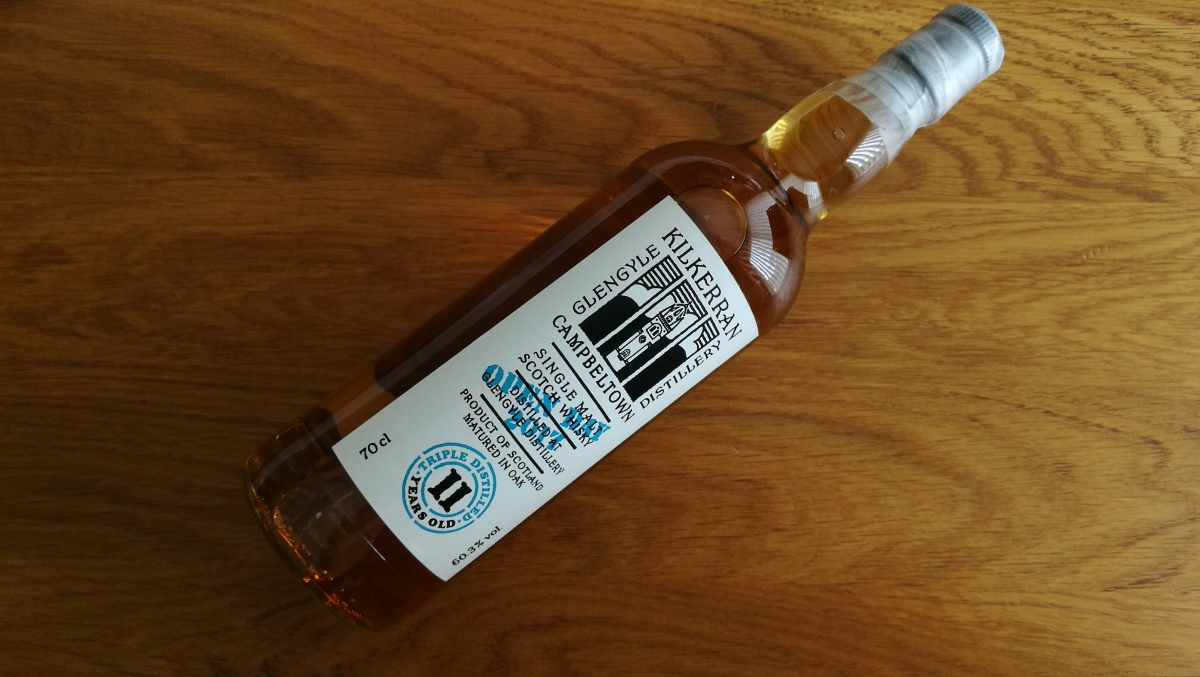Kilkerran 11-year-old Triple Distilled
Recently there has been a disturbance in the force and the unmistakable pillars of distillation. The whisky status quo and what we perceive has been shaken and stirred. What will be will always be and that’s a belief that many still seem to exhibit. Pretenders to the throne will vanish as suddenly as they appear, leaving the old gods of whisky still in pole position.
Marvellous, managed to squeeze a few sayings into the
opening lines. However there is a theme here as there should always be with a
Whisky Rover article review. When Glengyle distillery was revived at the turn
of the century, it brought new opportunities, employment and delivered a whisky
region to Campbeltown. The opportunity to start afresh under the guise of
Kilkerran, armed with decades of knowledge from the mothership, Springbank, and
the criminally unused stills from the Ben Wyvis distillery, formerly within
Invergordon.
Kilkerran was ahead of the pack; who back then would have
foreseen the ensuing madness of building distilleries on every street corner?
Enthusiasts were able to check its growing potential via the Work In Progress
series before the debut of that 12-year-old in 2016. A fine whisky, devoid of
glamorous packaging, with a price tag to warm the heart of any would be
purchaser. It was a refreshing change from these times where spirit under
3-years-old seems to sell at higher retail prices. I wonder just how much
Kingsbarns, Eden Mill etc. will charge for their 3-year-old when the day
arrives?
For Kilkerran we’ve had batch 2 of the 12-year-old and now
the distillery looks forward. A successful release, although I’m still swayed
towards the Work In Progress 7 Bourbon Wood, which just possesses that wow
factor. With the Springbank DNA woven into its very being, Kilkerran is adept
at using a variety of casks and techniques to see what the results are. The
8-year-old cask strength was well received earlier this year and at the time of
writing this piece, the Cadenhead release (the first independent bottling) is my whisky of the year, hailing from a rum cask.
It’s already setting a high benchmark for other new
distilleries. Except Kilkerran has taken its time to reach this level, whereas
many incoming distilleries have a different business model that forces them to
bottle at the magical point. Ideally, it should only occur when the whisky is
at its zenith yet we know with the odd exception this won’t happen. The coming
years will see a great deal of overpriced and youthful single malts hitting the
market. Ballindalloch will only bottle when they believe its ready, and I’m
sure Dornoch will do the same. These distilleries are family owned, rather than
at the beckon call of shareholders and investors who only seek returns, as
opposed to quality.
The whisky chronicles are littered with tales of enthusiastic owners who misjudged the cost of running a distillery, after the joyous achievement of establishing their vision. Nowadays, arguably the stakes are higher and many do not have the comfort of family backing, or being investor free. For Kilkerran it can count upon the owners of Springbank and that dogged Campbeltown determination to do things their own way and in their own time.
Springbank of course is 2.5 distilled, but the team are also
adept at dipping their toes into other spectrums with Longrow the traditional
double distillation and Hazelburn adopting the triple Irish approach. Why
Springbank and other elderly whisky distilleries do things different is one of
the idiosyncrasies lost to time, but without such features Benrinnes and
Mortlach would be that little more boring. Sadly, Benrinnes dropped its
practise of triple distillation joining many others that have moved away from
the practice including Glen Keith.
Triple distillation by its very nature seeks to remove the
more dense compounds and oils in the alcohol but increasing the level of copper
contact. I tend to avoid terminology such as ‘smooth’ that you often hear
applied to the Irish section, which I translate as being dull. Rather, these
whiskies lack the heavy flavours and instead prefer the light fruity and floral
aspects that potentially become more prevalent with the triple approach. This
explains why it was very popular during the glory days of the Lowland region,
with Auchentoshan, Rosebank and Littlemill pursuing this approach to great
effect.
It should come as no surprise that this devious types at
Kilkerran have sought to experiment themselves with the triple approach and
this 2017 festival bottling gives us the opportunity to experience the results. This Kilkerran has been triple distilled, bottled at 11-years-old and a strength of 60.3% volume. Coming from a first fill bourbon barrel, this resulted in an outturn of just 192 bottles.
Colour: a light tan
Nose: power and freshness initially, cotton sheets and a summer's breeze aided by the vanilla and Camomile tea. A gentle orange marmalade boosted by citrus notes including lime, then a waxy buttery aspect finished by a heathery foliage. The addition of water brings out more of the floral heather quality along with honey, plasterboard and boiled sweets.
Taste: an immediate download of sugary sweetness, vanilla before the cascade of alcohol and then a creamy finish unfolds. Water results in candy cigarettes, ginger, green apples and a fleeting earthiness towards the finish that remains full of cream and now pepper.
Overall: this whisky does require water as its a little too aggressive without. It's an interesting experiment as the first triple distilled Kilkerran. With all releases from this distillery, it has its redeeming qualities but its by far not the strongest Kilkerran I've experienced. As such its an interesting reward for enthusiasts who made the voyage to Campbeltown for the 2017 festival.
My thanks to Ben who picked up this bottle and passed it on for cost price. A welcome gesture and you can read what he thought about this release right here.


